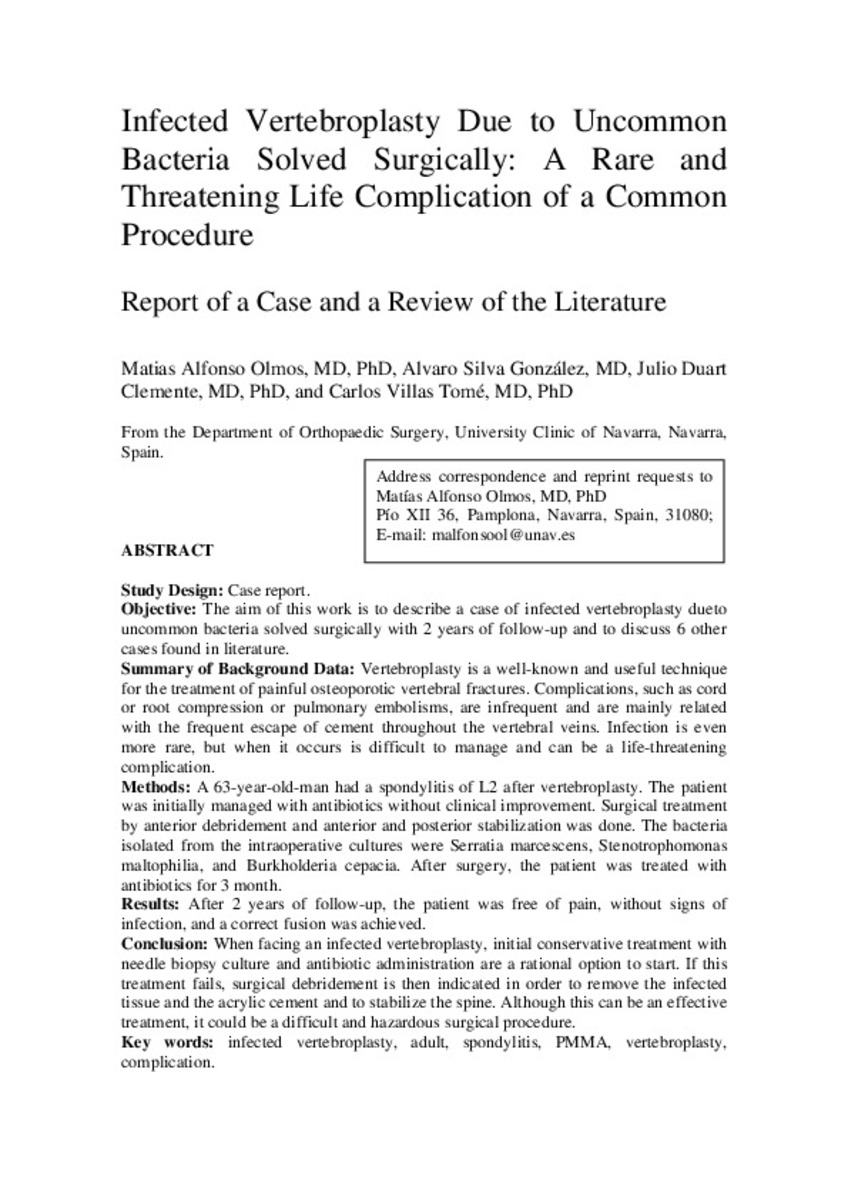Infected Vertebroplasty Due to Uncommon Bacteria Solved Surgically: A Rare and Threatening Life Complication of a Common Procedure
Palabras clave :
Lumbar Vertebrae/surgery
Postoperative Complications/microbiology/surgery
Spinal Fusion/instrumentation/methods
Fecha de publicación :
2006
Editorial :
Lippincott, Williams & Wilkins
Cita:
Alfonso Olmos M, Silva González A, Duart Clemente J, Villas Tomé C. Infected vertebroplasty due to uncommon bacteria solved surgically: a rare and threatening life complication of a common procedure: report of a case and a review of the literature. Spine (Phila Pa 1976). 2006 Sep 15;31(20):E770-3.
Aparece en las colecciones:
Estadísticas e impacto
0 citas en

0 citas en

Los ítems de Dadun están protegidos por copyright, con todos los derechos reservados, a menos que se indique lo contrario.









